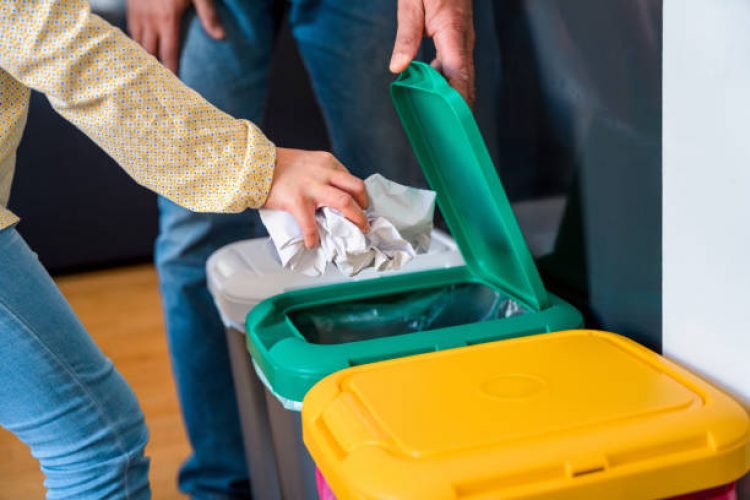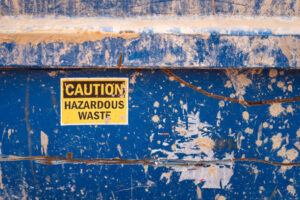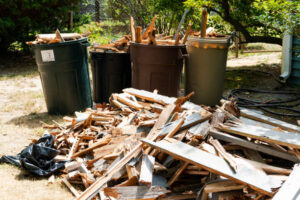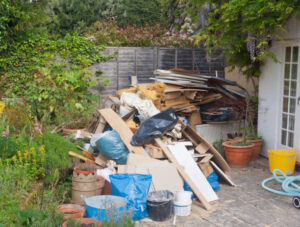Whether you’re clearing out your garage or managing waste for a multi-story office building, understanding the distinction between residential and commercial junk removal is essential for making informed decisions. While both services help eliminate unwanted materials, they differ significantly in scope, complexity, and execution. In this comprehensive guide, we’ll explore the key differences between these two types of junk removal services and why choosing the right one matters.
Understanding the Junk Removal Industry
The junk removal industry has become a vital component of the American economy. According to IBISWorld, the junk removal industry in the United States generated $10.4 billion in revenue in 2023 and employed approximately 67,000 people. This growth reflects increasing consumer awareness about waste management and sustainability.
Interestingly, nearly 56% of junk removal jobs come from households, while commercial jobs account for the rest. This split demonstrates that both sectors drive significant demand for professional junk removal services.
What Is Residential Junk Removal?
Residential junk removal focuses on decluttering homes, garages, attics, basements, and yards. This service is designed for homeowners and renters who need to dispose of unwanted items that accumulate over time.
Common Residential Junk Removal Scenarios
- Moving or downsizing: Disposing of items before relocating to a smaller space
- Post-renovation cleanup: Removing construction debris, old fixtures, and materials
- Spring cleaning: Getting rid of accumulated clutter and unused belongings
- Estate cleanouts: Clearing entire properties after a loved one passes away
- Appliance disposal: Removing old refrigerators, washers, and other large appliances
Characteristics of Residential Junk Removal
Type and Volume of Waste: Residential garbage generally consists of household waste—organic food scraps, packaging materials, used paper products, and personal hygiene items. The waste is typically lighter and more predictable in composition compared to commercial waste.
Collection Schedule: Residential garbage removal typically follows a set municipal schedule, with weekly or bi-weekly pickups. However, for larger cleanout projects, homeowners often hire on-demand junk removal services.
Cost Structure: Residential garbage removal is often funded through property taxes or a flat fee to the city. For specialized junk removal services, pricing is usually based on the volume of items or truck space used.
What Is Commercial Junk Removal?
The junk removal industry provides essential services for residential and commercial clients seeking efficient disposal, recycling, and repurposing of unwanted materials. Commercial junk removal serves businesses, construction sites, retail locations, restaurants, and other enterprises.
Common Commercial Junk Removal Needs
- Office cleanouts: Disposing of old furniture, electronics, and equipment
- Retail renovations: Removing fixtures, displays, and obsolete inventory
- Restaurant waste: Managing food waste, grease, and kitchen equipment
- Construction sites: Hauling away debris, building materials, and heavy waste
- Warehouse clearances: Eliminating pallets, packaging materials, and excess stock
Characteristics of Commercial Junk Removal
Type and Volume of Waste: Commercial garbage varies widely depending on the type of business. Restaurants produce large amounts of food waste and grease; offices generate paper, packaging, and electronic waste; construction sites discard heavy debris, metal, and building materials.
Collection Frequency: Commercial garbage removal is more customized. Businesses may require daily, bi-daily, or multiple pickups per week, depending on their output.
Equipment Requirements: Commercial garbage removal often involves more specialized equipment. Businesses may require larger dumpsters, compactors, roll-off containers, or even balers for materials like cardboard.
Key Differences Between Residential and Commercial Junk Removal
1. Scale and Complexity
The most obvious difference lies in the scale of operations. When it comes to decluttering, the needs of residential and commercial spaces can vary significantly. Commercial projects typically involve larger volumes of waste, heavier materials, and more complex logistics than residential jobs.
2. Regulations and Compliance
Commercial establishments face higher scrutiny. They may be required to document waste disposal practices, separate recyclables, properly manage hazardous materials, and comply with health and safety standards. Non-compliance can result in hefty fines and legal issues, particularly in highly regulated sectors like healthcare and food service.
Residential junk removal, while still subject to local regulations, typically faces less stringent documentation requirements.
3. Pricing Models
Commercial clients pay based on service frequency, container size, and waste volume. The more complex the waste stream, the higher the cost. Businesses may also incur additional charges for special pickups, recycling services, or disposal of hazardous materials.
In contrast, residential customers often pay a one-time fee based on the volume of junk removed or truck space utilized.
4. Equipment and Resources
Heavy lifting and handling hazardous materials can be risky. Professionals come equipped with tools and expertise to manage it safely. Commercial operations often require industrial-grade equipment, multiple crew members, and specialized vehicles capable of handling heavy or bulky materials.
5. Environmental Considerations
Both sectors are making strides toward sustainability. According to the EPA, only about 35% of construction and demolition waste is recycled or recovered. Professional junk removal companies play a crucial role in improving these numbers by prioritizing recycling and donation over landfill disposal.
Approximately 69 million tons were recycled and 25 million tons were composted, equivalent to a 32.1 percent recycling and composting rate.
The Growing Demand for Junk Removal Services
Several factors contribute to the increasing demand for both residential and commercial junk removal:
Consumer Spending and Waste Generation
The average individual in the U.S. produces nearly 4.5 pounds of waste each day. This staggering amount of daily waste necessitates efficient removal services.
The increase in household income allowed families to increase their consumer spending. The more money households can spend on goods and services, the more waste they create.
Industry Growth Trends
Residential waste has remained stable, helping stabilize industry demand. Over the last five years, commercial and industrial waste generation has driven the Industry’s growth.
The residential sector is a major driver of growth in the junk removal industry. According to Statista, revenue in the U.S. residential junk removal segment is projected to reach $6.1 billion in 2024.
Why Hire Professional Junk Removal Services?
Whether residential or commercial, professional junk removal offers several advantages:
Time Savings
Sorting, packing, and hauling junk takes valuable time. Professionals streamline the process, saving you hours or even days.
Proper Disposal and Recycling
Not all junk can go to the landfill. Professional services ensure proper recycling, donation, or disposal to minimize environmental impact. This is particularly important given that the United States produces the largest amount of trash in the world. Over 350 million tons of trash are produced every year, with 85 million of those tons considered to be compostable and recyclable.
Safety and Expertise
Handling heavy items, hazardous materials, or large volumes of waste can be dangerous without proper training and equipment. Professional junk removal companies have the expertise to manage these challenges safely.
Customer Satisfaction
A study by American Express found that 78% of consumers have bailed on a transaction or not made an intended purchase because of a poor service experience. This underscores the importance of choosing reliable, customer-focused junk removal providers.
Selecting the Right Junk Removal Service
When choosing between residential and commercial junk removal services, consider:
- Volume and type of waste: Determine the scope of your project
- Frequency of service: One-time cleanout or ongoing waste management?
- Regulatory requirements: Are there compliance considerations for your business?
- Budget: Understand pricing structures and get multiple quotes
- Environmental practices: Choose companies that prioritize recycling and responsible disposal
The Future of Junk Removal
The junk removal industry continues to evolve with technological advancements and growing environmental consciousness. As consumer awareness of responsible waste management grows, the industry is experiencing increased demand for eco-friendly disposal solutions and donation-based removals. Advancements in digital platforms have also streamlined service accessibility, allowing businesses to optimize operations and customer outreach.
An investment of $36.5 to $43.4 billion would be needed to improve curbside collection, drop-off, and processing infrastructure across the United States by 2030. This level of investment could lead to the potential recovery of an additional 82 to 89 million tons of packaging and organic waste, which is a 91% increase in recovery from the estimated 94 million tons recycled and composted in EPA’s 2018 Facts and Figures report.
Conclusion
Understanding the difference between residential and commercial junk removal is essential for making informed decisions about waste management. While residential services focus on household cleanouts and smaller-scale projects, commercial junk removal addresses the complex needs of businesses with larger volumes, stricter regulations, and specialized equipment requirements.
Whether you’re clearing out your home or preparing a commercial property for its next phase, professional junk removal services are essential. Residential and commercial needs differ, but companies provide tailored solutions for both sectors.
By choosing the right junk removal service and prioritizing environmentally responsible disposal practices, you can contribute to a cleaner, more sustainable future while efficiently managing your waste removal needs.
References
- Kale’s Junk and Trash Hauling – 100 Junk Removal Statistics You Should Know for 2025
- ZipDo – Essential Junk Removal Industry Statistics In 2024
- ClearSpace Junk Removal – Residential Vs Commercial Junk Removal
- EPA – National Overview: Facts and Figures on Materials, Wastes and Recycling
- AAA Sanitation Co – Understanding the Difference Between Residential and Commercial Garbage Removal













